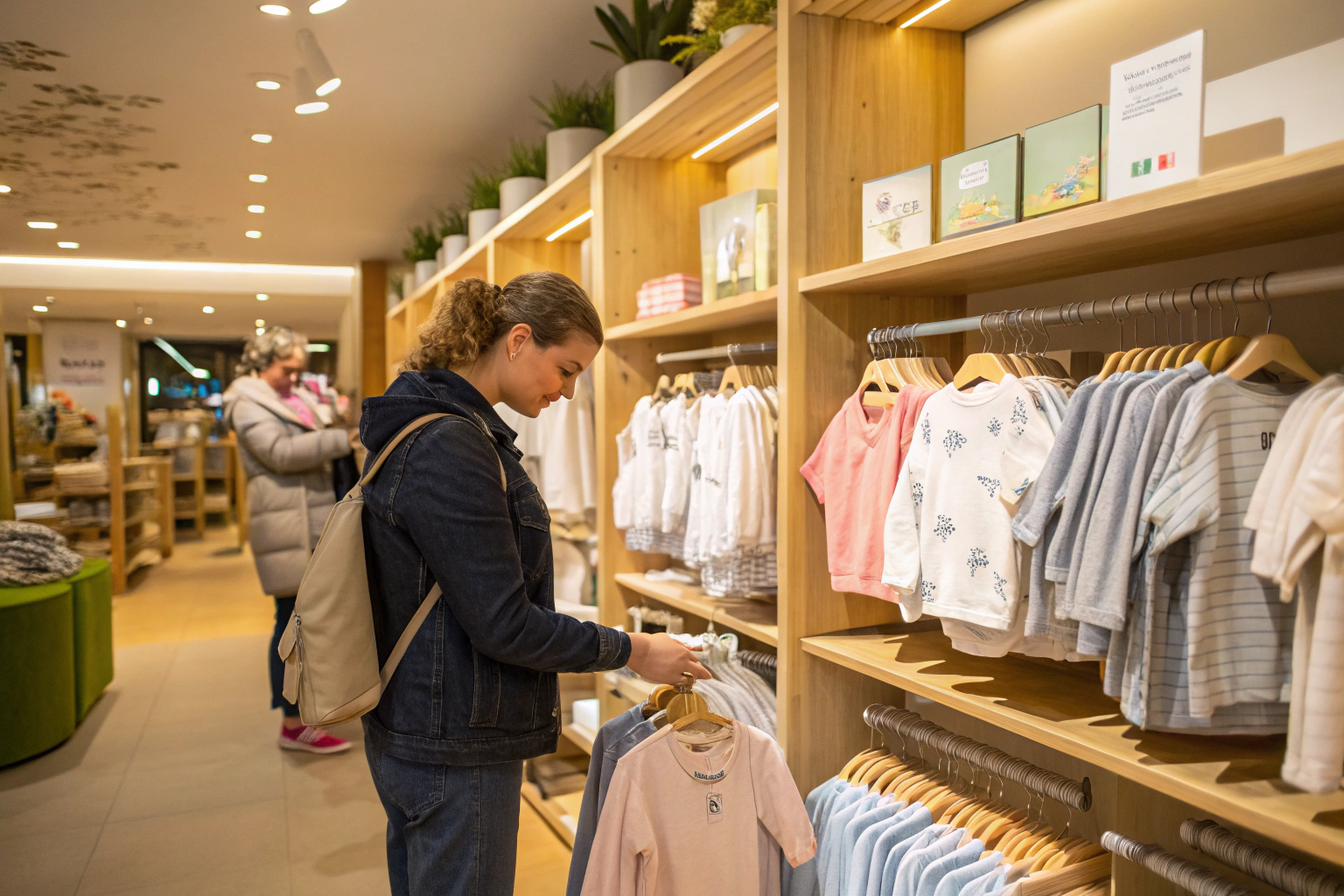Shopping for baby or toddler clothes isn’t just about size or style — it’s about softness, safety, and sourcing you can trust. I’ve spent decades producing children’s clothing for international brands, and I know firsthand what makes a great store stand out from the rest.
My favorite store for baby and toddler clothing is Carter’s — for its wide variety, reliable quality, and consistent value across both physical and online retail.
But there are many great options worth considering. In this blog, I’ll share why Carter’s is a go-to for many American parents, how newer players like Hanna Andersson and L’ovedbaby are rising fast, and what babywear buyers can learn from them when sourcing from China.
Why is Carter’s still the top baby clothing store?
For decades, Carter’s has been the dominant babywear retailer in the U.S. If you walk into any American strip mall, chances are you’ll find a Carter’s or OshKosh store nearby. It’s a household name that families trust.
Carter’s remains the most popular store for baby and toddler clothing because of its consistent quality, mid-level pricing, and accessible store footprint across the country.
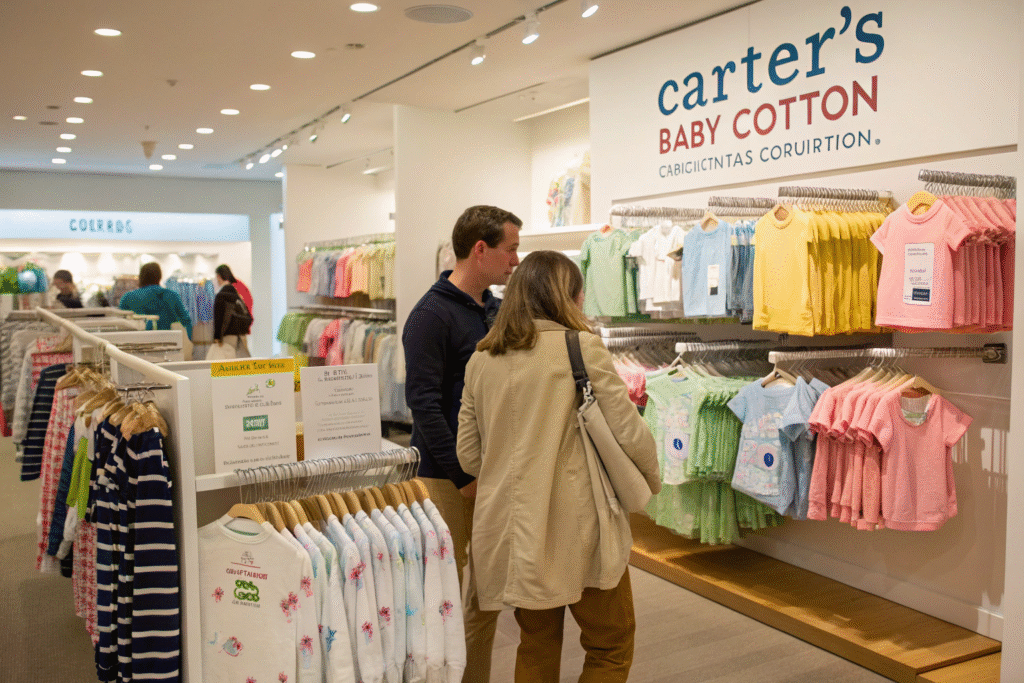
What makes Carter’s designs appeal to parents?
Carter’s clothing emphasizes easy-on/easy-off designs, softness, and fun seasonal themes. Their Sleep & Play footies and multi-pack bodysuits offer both function and affordability. For bulk buyers or retailers, Carter’s also sets a great example for how to manage inventory turnover and size assortments.
How does Carter’s balance quality and affordability?
While Carter’s doesn’t market itself as organic or luxury, they maintain strict quality control and fabric consistency. Their corporate sustainability program also outlines goals for improving cotton sourcing and packaging. For price-sensitive yet quality-conscious buyers like Ron, it’s a proven business model.
What makes Hanna Andersson a rising favorite?
Unlike Carter’s, which plays the volume game, Hanna Andersson focuses on premium organic materials and a clean Scandinavian aesthetic. Their brand stands for softness, skin safety, and matching family sets.
Hanna Andersson has become a favorite for parents seeking organic, colorful, and long-lasting children’s clothing with a stylish but playful twist.
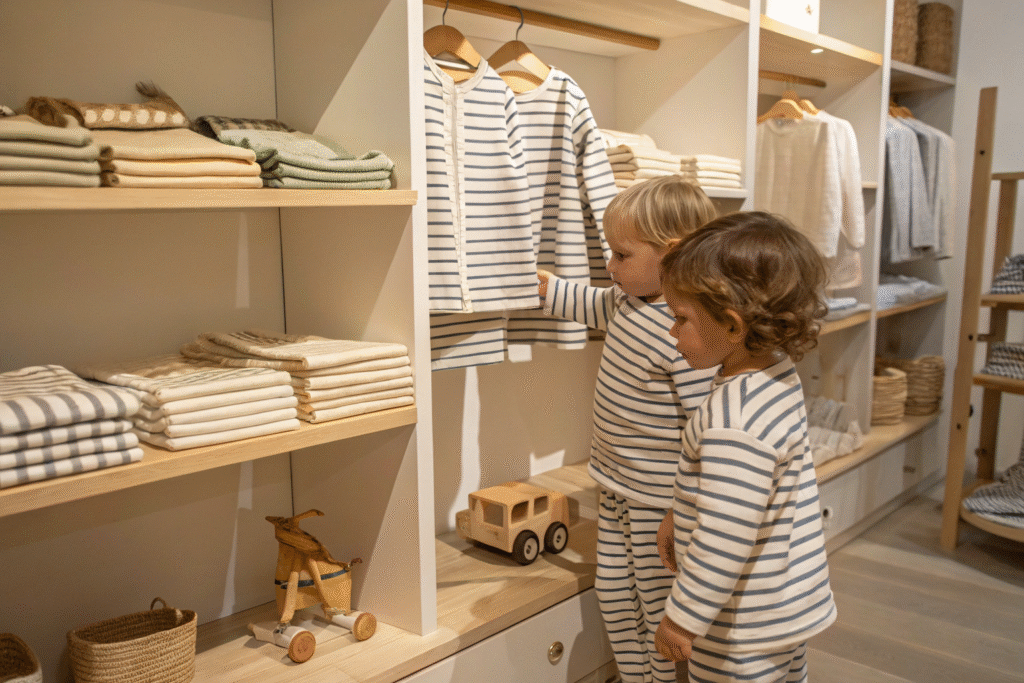
Why do parents trust Hanna Andersson?
Their signature pajama collections are made from GOTS-certified cotton, ensuring safety for sensitive skin. They also advertise flatlock seams and tag-free designs that reduce irritation. This design ethos is ideal for babies prone to rashes or eczema.
How does Hanna Andersson cater to gifting and holidays?
Many customers choose them for matching family holiday outfits, which have gone viral on social media. For B2B importers, this seasonal angle shows the importance of calendar-based design cycles and batch releases.
What niche brands are trusted by eco-conscious families?
Smaller brands like L’ovedbaby and Burt’s Bees Baby have earned strong loyalty among parents who value purity and sustainability. While they’re not as large as Carter’s, their appeal lies in trust.
L’ovedbaby and Burt’s Bees Baby are go-to stores for eco-conscious parents seeking organic, gentle, and minimalist babywear.
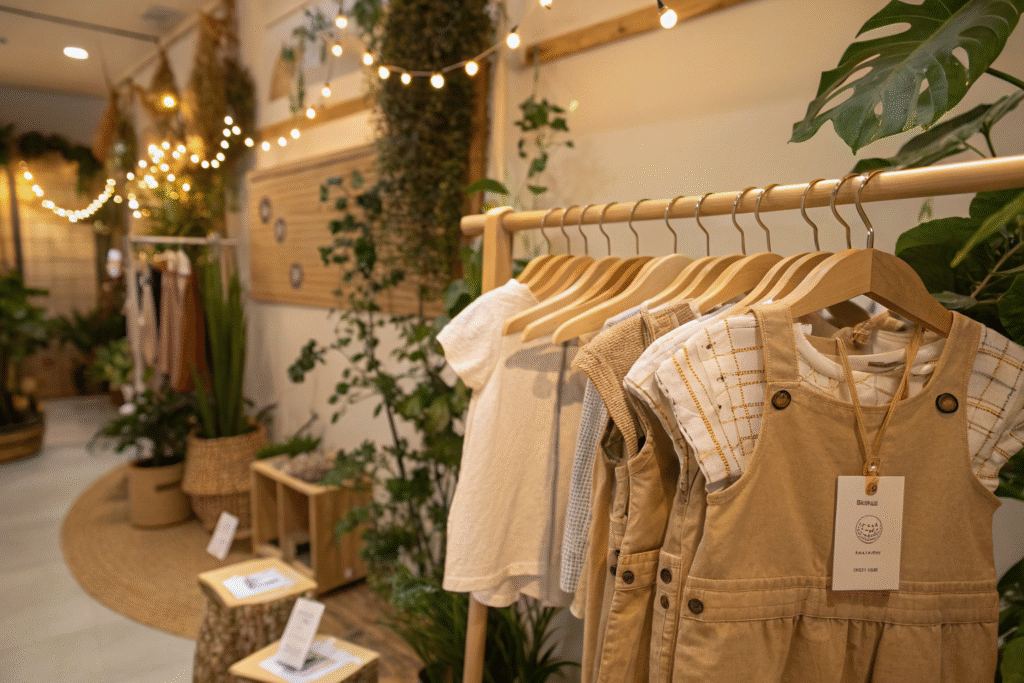
What sets L’ovedbaby apart?
L’ovedbaby is known for its muted color palettes and snug-fitting basics. Their use of 100% certified organic cotton and low-impact dyes resonates with wellness-focused families. Their certifications build trust and align with emerging clean-label parenting trends.
How does Burt’s Bees Baby maintain brand consistency?
As a natural offshoot of the skincare brand, Burt’s Bees Baby applies similar values: soft knits, no harmful chemicals, and eco packaging. They’ve made a name through their Amazon shop, proving that sustainable babywear can succeed even through high-volume e-commerce.
What can kidswear buyers learn from these brands?
As a manufacturer, I’ve seen firsthand how smart babywear brands build trust. Their retail success is based on more than design — it’s supply chain consistency, certified fabrics, and fast response to trends.
Babywear buyers can learn from top stores by prioritizing safe materials, predictable sizing, seasonal collections, and responsive vendor communication.
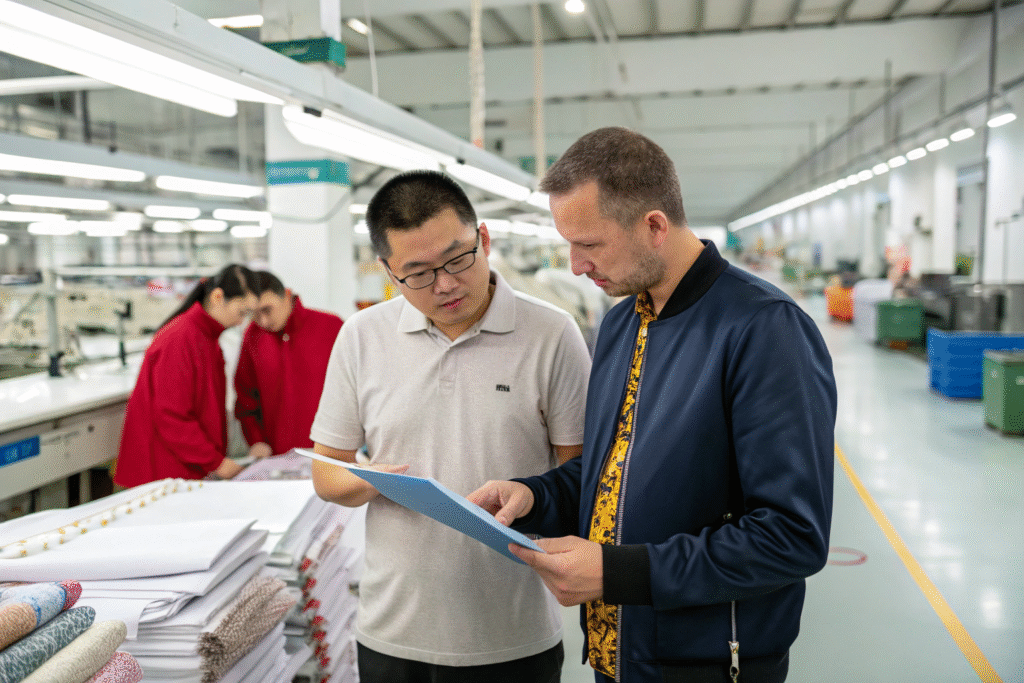
Why does fabric certification matter in babywear?
Parents don’t want pesticides near their babies. Use GOTS and OEKO-TEX standards when sourcing cotton or bamboo knits. Factories like ours already implement these, helping our B2B clients meet the same benchmarks as top brands.
How should buyers plan seasonal orders?
Stores like Carter’s and Hanna Andersson drop fresh styles every few months. That’s not random — it’s about batch planning, size grading, and pre-order forecasting. B2B buyers should ask suppliers about MOQ flexibility and lead times by fabric type to avoid overstock or delays.
Conclusion
Choosing the right store for baby and toddler clothing depends on your values. If you're looking for variety and value, Carter’s delivers. For premium and organic options, Hanna Andersson and L’ovedbaby lead the way. And if you’re a buyer or brand owner like Ron, these stores offer excellent case studies in trust, consistency, and retail strategy — all of which can be built into your own sourcing and design operations.

